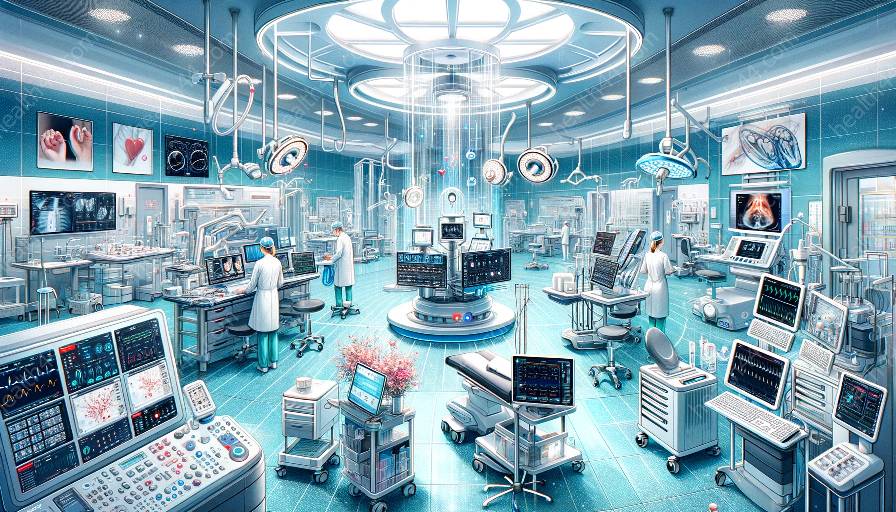Bioelectric medicine and neural interface technology sit at the forefront of bioengineering, integrating advanced technologies to explore the potential for interfacing with the nervous system to diagnose and treat a range of medical conditions. This topic cluster delves into the convergence of these fields, shedding light on the latest advancements and their implications for medical devices and healthcare.
The Intersection of Bioelectric Medicine and Neural Interface Technology
In recent years, the integration of bioelectric medicine and neural interface technology has emerged as a promising area of research and development. Bioelectric medicine harnesses the body's electrical signals and neural pathways to modulate physiological processes, while neural interface technology focuses on developing interfaces that connect with the nervous system to monitor or regulate its activity.
This convergence holds immense potential for addressing neurological disorders, chronic pain, and various other medical conditions that have traditionally proven challenging to treat using conventional methods. By leveraging the body's own electrical communication system and interfacing with the nervous system, researchers and engineers are exploring new frontiers in the design and implementation of medical devices and therapies.
The Role of Bioengineering in Advancing Bioelectric Medicine and Neural Interface Technology
Bioengineering plays a pivotal role in advancing the field of bioelectric medicine and neural interface technology. By integrating principles from engineering, biology, and medicine, bioengineers are at the forefront of developing innovative solutions that bridge the gap between technology and the human body. This multidisciplinary approach enables the creation of sophisticated neural interfaces, bioelectric stimulators, and other medical devices that offer new possibilities for diagnosing and treating neurological conditions.
Furthermore, bioengineers are actively involved in the development of biocompatible materials, implantable devices, and signal processing techniques that are essential for the safe and effective integration of bioelectric medicine and neural interface technology into clinical practice. Through a synthesis of cutting-edge research and technological innovation, bioengineering is driving the evolution of medical devices that have the potential to significantly impact patient care and outcomes.
Advancements in Neural Interface Technology
Neural interface technology encompasses a diverse range of approaches, including implantable electrode arrays, neural prosthetics, and brain-computer interfaces. These technologies aim to establish seamless communication between the nervous system and external devices, offering new avenues for diagnosing and treating neurological disorders. For instance, neural interfaces have the potential to restore lost sensory or motor functions, providing hope for individuals affected by conditions such as spinal cord injury or limb loss.
The development of miniaturized, high-density electrode arrays and advanced signal processing algorithms has expanded the capabilities of neural interfaces, enabling precise recording and stimulation of neural activity. Moreover, the integration of wireless communication and closed-loop control systems has enhanced the functionality and usability of neural interface devices, paving the way for personalized and adaptive therapeutic interventions.
Applications of Bioelectric Medicine in Healthcare
The application of bioelectric medicine extends to a wide spectrum of healthcare domains, encompassing both diagnostic and therapeutic modalities. Electroceuticals, a category of bioelectric medical devices, utilize electrical stimulation to modulate the function of specific neural circuits, offering targeted and non-pharmacological approaches for managing chronic pain, inflammation, and other complex conditions.
Furthermore, bioelectric medicine holds promise for neuromodulation techniques that can selectively target aberrant neural activity, providing effective treatments for epilepsy, depression, and movement disorders. In addition to these therapeutic applications, bioelectric medicine also has the potential to revolutionize the field of neurodiagnostics, enabling high-resolution mapping of neural networks and the precise localization of pathological activity in the brain.
Future Directions and Implications
The advancements in bioelectric medicine and neural interface technology have significant implications for the future of healthcare and bioengineering. As research continues to unveil the intricacies of neural circuitry and the mechanisms of electrical signaling within the body, the development of next-generation medical devices and therapies is poised to expand the frontiers of personalized and precision medicine.
Moreover, the convergence of bioelectric medicine with neural interface technology is opening new avenues for collaborative research and innovation across interdisciplinary fields, fostering synergistic approaches to address complex medical challenges. By leveraging bioengineering principles and cutting-edge technologies, the integration of bioelectric medicine and neural interface technology holds the potential to reshape the landscape of neurological healthcare, offering new hope for patients and practitioners alike.


